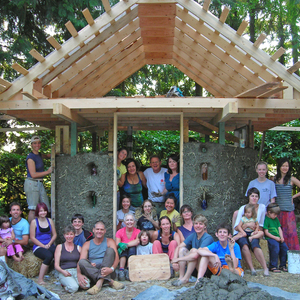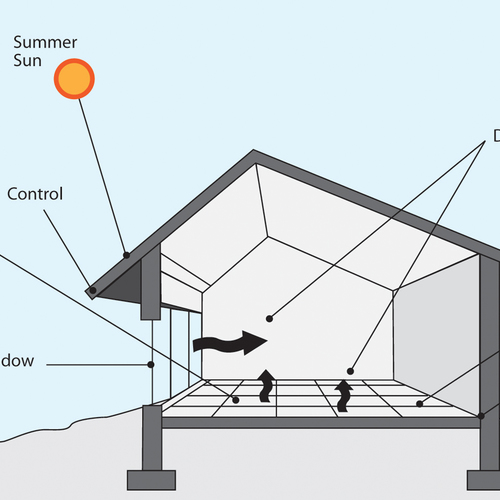
Cob walls are made from clay soil, sand, and straw. After mixing and moistening these three ingredients, a cob builder takes globs of the resulting mud and plops it in place to make up part of a wall. A cob wall is built in lifts, with each lift generally between 12 and 24 inches high. After each lift is placed, the damp cob is allowed to dry for a period ranging (depending on the weather) from one day to two weeks—a necessary period of drying to allow the cob to be firm enough permit the next lift to be installed.
This process results in a monolithic earth wall that is similar in some respects to earth walls made by different approaches—for example, adobe walls or rammed earth walls. Cob walls are a traditional building method in many countries, including Britain, France, Germany, Morocco, Mali, Turkey, and Syria.
Technical and complete
Three California authors—Anthony Dente, Michael Smith, and Massey Burke—have written a new book called Essential Cob Construction: A Guide to Design, Engineering, and Building. If you’re thinking of building a house with cob walls, I highly recommend this book.
Essential Cob Construction provides readers with lots of valuable information on cob walls, including the history of cob as well as instructions for designers and builders. The authors have pulled together a great deal of information that was unavailable to natural builders who revived cob building in the 1980s. These details, gathered by scholarship, by performing engineering calculations, by testing mockups, and by interviewing cob builders, are invaluable. The authors of this book have established a valuable technical baseline for future developments in cob building.
Among the highly useful information in the book is the story of Appendix AU, the section of the 2021 International Residential Code (IRC)…
Weekly Newsletter
Get building science and energy efficiency advice, plus special offers, in your inbox.

This article is only available to GBA Prime Members
Sign up for a free trial and get instant access to this article as well as GBA’s complete library of premium articles and construction details.
Start Free TrialAlready a member? Log in














3 Comments
Thank you for calling them out on the misapplication of "thermal mass" and "effective r-value." It seems those are concepts that just won't die. They are intuitive ideas and the intuition just happens to be wrong.
"(1) read this book, and (2) choose another wall system"
"I just love figs"
Examples of why Martin's blogs make such satisfying reading.
If you live in a place where the building code is enforced a cob building isn't going to meet the energy efficiency requirements.
Log in or become a member to post a comment.
Sign up Log in